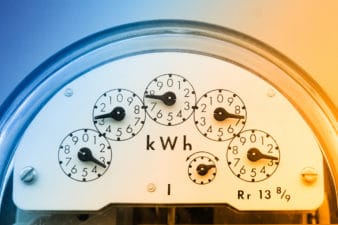Elon Musk has become synonymous with innovation. The entrepreneur from South Africa has revolutionized the auto industry, launched rockets into space, and dug freight tunnels underground.
How does a guy with five kids get so much done? Well, one thing’s for sure: he values clear thinking.
In a Tweet from the end of last year, Musk posted an infographic of 50 cognitive biases, declaring that they “should be taught to all at a young age.” In case you didn’t take a philosophy course, a cognitive bias is simply a systematic error in thinking, which causes you to make faulty judgments that you think are right.
The infographic came from the loan company TitleMax (why a loan company cares about cognitive biases is beyond me). If you weren’t taught these biases at a young age, don’t worry — now’s your chance to improve your thinking:
1. Fundamental Attribution Error: We judge others on their personality or fundamental character, but we judge ourselves on the situation.
2. Self-Serving Bias: Our failures are situational, but our successes are our responsibility.
3. In-Group Favouritism: We favour people who are in our in-group as opposed to an out-group.
4. Bandwagon Effect: Ideas, fads, and beliefs grow as more people adopt them.
5. Groupthink: Due to a desire for conformity and harmony in the group, we make irrational decisions, often to minimize conflict.
6. Halo Effect: If you see a person as having a positive trait, that positive impression will spill over into their other traits. (This also works for negative traits).
7. Moral Luck: Better moral standing happens due to a positive outcome; worse moral standing happens due to a negative outcome.
8. False Consensus: We believe more people agree with us than is actually the case.
9. Curse of Knowledge: Once we know something, we assume everyone else knows it, too.
10. Spotlight Effect: We overestimate how much people are paying attention to our behaviour and appearance.
11. Availability Heuristic: We rely on immediate examples that come to mind while making judgments.
12. Defensive Attribution: As a witness who secretly fears being vulnerable to a serious mishap, we will blame the victim less and the attacker more if we relate to the victim.
13. Just-World Hypothesis: We tend to believe the world is just; therefore, we assume acts of injustice are deserved.
14. Naïve Realism: We believe that we observe objective reality and that others are irrational, uninformed, or biased.
15. Naïve Cynicism: We believe that we observe objective reality and that other people have a higher egocentric bias than they actually do in their intentions/actions.
16. Forer Effect (aka Barnum Effect): We easily attribute our personalities to vague statements, even if they can apply to a wide range of people.
17. Dunning-Kruger Effect: The less you know, the more confident you are. The more you know, the less confident you are.
18. Anchoring: We rely heavily on the first information introduced when making decisions.
19. Automation Bias: We rely on automated systems, sometimes trusting too much in the automated correction of the actually correct decisions.
20. Google effect (aka Digital Amnesia): We tend to forget information that’s easily looked up in search engines.
21. Reactance: We do the opposite of what we’re told, especially when we perceive threats to personal freedoms.
22. Confirmation Bias: We tend to find and remember information that confirms our perceptions.
23. Backfire Effect: Disproving evidence sometimes has the unwarranted effect of confirming our beliefs.
24. Third-Person Effect: We believe that others are more affected by mass media consumption than we ourselves are.
25. Belief Bias: We judge an argument’s strength not by how strongly it supports the conclusion but by how plausible the conclusion is in our own minds.
26. Availability Cascade: Tied to our need for social acceptance, collective beliefs gain more plausibility through public repetition.
27. Declinism: We tend to romanticize the past and view the future negatively, believing that societies/institutions are, by and large, in decline.
28. Status Quo Bias: We tend to prefer things to stay the same; changes from the baseline are considered to be a loss.
29. Sunk Cost Fallacy (aka Escalation of Commitment): We invest more in things that have cost us something rather than altering our investments, even if we face negative outcomes.
30. Gambler’s Fallacy: We think future possibilities are affected by past events.
31. Zero-Risk Bias: We prefer to reduce small risks to zero, even if we can reduce more risk overall with another option.
32. Framing Effect: We often draw different conclusions from the same information depending on how it’s presented.
33. Stereotyping: We adopt generalized beliefs that members of a group will have certain characteristics, despite not having information about the individual.
34. Out-Group Homogeneity Bias: We perceive out-group members as homogeneous and our own in-groups as more diverse.
35. Authority Bias: We trust and are more often influenced by the opinions of authority figures.
36. Placebo Effect: If we believe a treatment will work, it often will have a small physiological effect.
37. Survivorship bias: We tend to focus on those things that survived a process and overlook ones that failed.
38. Tachypsychia: Our perceptions of time shift depending on trauma, drug use, and physical exertion.
39. Law of Triviality (aka “Bike-Shedding”): We give disproportionate weight to trivial issues, often while avoiding more complex issues.
40. Zeigarnik Effect: We remember incomplete tasks more than completed ones.
41. IKEA Effect: We place higher value on things we have partially created ourselves.
42. Ben Franklin Effect: We like doing favours; we are more likely to do another favour for someone if we’ve already done a favour for them than if we had received a favour from that person.
43. Bystander Effect: The more other people are around, the less likely we are to help a victim.
44. Suggestibility (aka the “Power of Suggestion”): We, especially children, sometimes mistake ideas suggested by a questioner for memories. For example, when someone you respect and trust says, “Remember that one time we…” and you don’t remember it, you’re likely to say, “Yes, that was fun.”
45. False Memory: We mistake imagination for real memories.
46. Cryptomnesia: We mistake real memories for imagination.
47. Clustering Illusion: We find patterns and “clusters” in random data.
48. Pessimism Bias: We sometimes overestimate the likelihood of bad outcomes.
49. Optimism Bias: We sometimes are overoptimistic about good outcomes.
50. Blind Spot Bias: We don’t think we have bias, and we see it in others more than ourselves.
What can you actually do with these 50 cognitive biases?
You might be feeling the “Dunning-Kruger Effect” effect right now (the more you know, the less confident you feel), or perhaps you’re feeling the “Blind Spot Bias” (“I know someone who exhibits all of these biases…”). But one thing is for sure: it’s certainly information overload.
My suggestion: use these biases to reflect, specifically in a journal. Read them one by one until a bias jumps out at you. Then pause and parse out why the bias seems significant.








